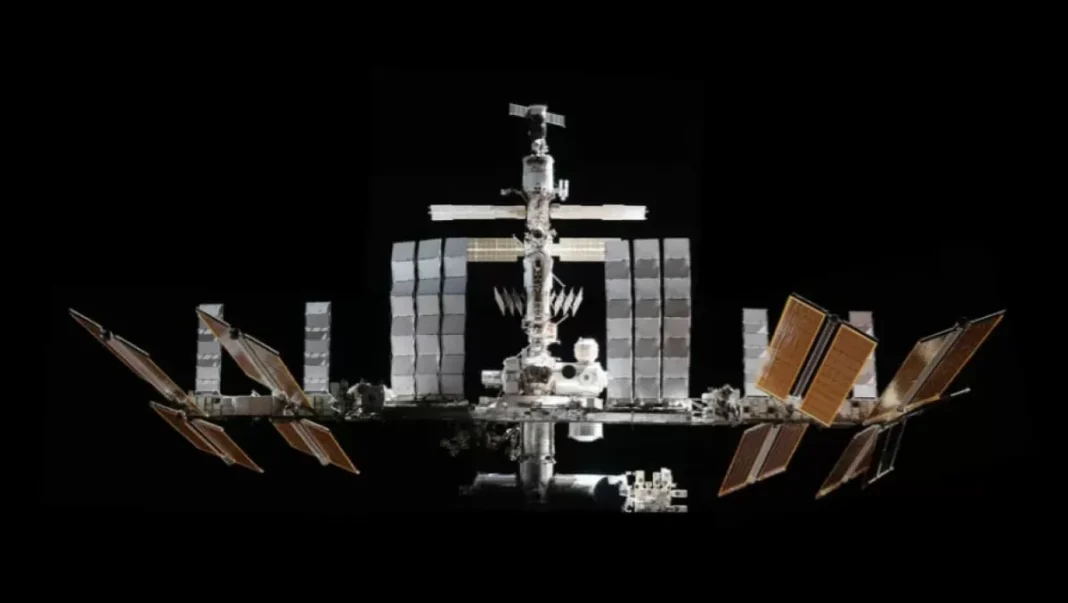The International Space Station (ISS) has been a symbol of human ingenuity and exploration for over two decades. It has served as a home and laboratory for astronauts from different countries, conducting groundbreaking research and experiments in the microgravity environment of space. However, as its lifespan comes to an end, plans have been made for a controlled deorbit in 2031, with the intention of disintegrating over the remote Point Nemo in the South Pacific. While this approach by NASA aims to reduce risks, concerns have been raised about the potential environmental impacts. Researchers have highlighted the need for further understanding of the effects on Earth’s upper atmosphere, and environmental organizations like Greenpeace have also expressed their concerns. Let us take a closer look at the situation and the steps being taken to ensure a safe and responsible deorbit of the ISS.
The ISS has been orbiting the Earth at an altitude of approximately 400 kilometers since its launch in 1998. Over the years, it has served as a platform for scientific research, technological advancements, and international cooperation. However, as the ISS ages, its components and systems are also deteriorating, making it necessary to plan for its controlled deorbit. This means that the ISS will be brought back into the Earth’s atmosphere in a controlled manner, where it will burn up and disintegrate over a remote location in the South Pacific known as Point Nemo. This location is often referred to as the “spacecraft cemetery” as it is the farthest point from any landmass, making it the safest and most responsible option for the deorbit of the ISS.
NASA has been working closely with its international partners, including the European Space Agency, the Russian Space Agency, and the Japanese Aerospace Exploration Agency, to plan and execute the deorbit of the ISS. The process will involve using the ISS’s engines to gradually lower its orbit, bringing it closer to Earth’s atmosphere. Once it reaches an altitude of about 120 kilometers, the ISS will begin to experience atmospheric drag, causing it to slow down and eventually disintegrate. This controlled deorbit approach is aimed at minimizing the risks of any debris falling onto populated areas, as well as reducing the environmental impact.
However, concerns have been raised about the potential effects on Earth’s upper atmosphere. The ISS has been a constant presence in the Earth’s orbit for over two decades, and its deorbit could potentially release large amounts of gases and particles into the upper atmosphere. This could have an impact on the Earth’s climate and weather patterns, as well as the ozone layer. Researchers have highlighted the need for further studies to better understand these potential effects and mitigate any negative impacts.
Environmental organizations like Greenpeace have also expressed their concerns about the deorbit of the ISS. They have called for more transparency and accountability from NASA and its international partners, as well as a thorough assessment of the environmental impacts. Greenpeace has also urged for the use of more sustainable and responsible methods for the deorbit of the ISS, such as using renewable energy sources to power the engines instead of burning fuel.
In response to these concerns, NASA has stated that they are committed to minimizing the environmental impact of the ISS deorbit. They have also emphasized the importance of international cooperation and transparency in the planning and execution of this process. NASA has also assured that they will continue to work closely with researchers and environmental organizations to better understand and mitigate any potential effects on the Earth’s upper atmosphere.
The deorbit of the ISS in 2031 will mark the end of an era in space exploration. It will be a bittersweet moment for all those involved in this remarkable project, but it is also a necessary step to ensure the safety and sustainability of our planet. While concerns have been raised about the potential environmental impacts, it is reassuring to know that NASA and its international partners are taking responsible and proactive measures to minimize these risks. As we bid farewell to the ISS, let us also look forward to the future of space exploration and the exciting possibilities it holds for humanity.



